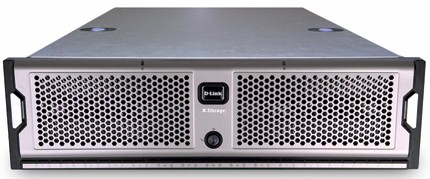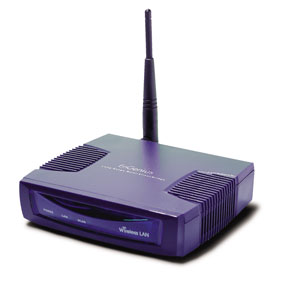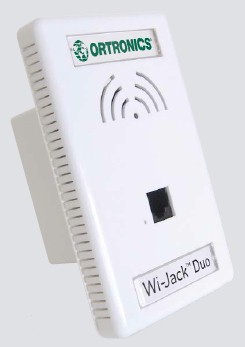Introduction

It’s the beginning of May, so it must be time for the annual networking rite of spring, Interop Las Vegas. While the show is pretty much exclusively focused on enterprise-grade networking, I’m sure I’ll be able to find a few things to interest those with smaller networks to run. Here’s a quick round-up of pre-show announcements and news.
Netgear is entering the SSL VPN space with the announcement of its low-cost SSL312 ProSafe SSL VPN Concentrator 25. The company portrays the device as “an affordable and reliable” SSL VPN Solution with no licensing restrictions and capable of handing under 100 users. The product ensures data privacy with SSLv3 and TLSv1.0 with AES-256.
The SSL312’s features include two 10/100 Ethernet ports plus a console port for remote manageability, Web interface with automatic cache clean up after each client’s session, “granular policy configuration tools and logging support and diagnostics.
The SSL312 will be available in Q3 2006 at a list price of $545. Also of note is that Netgear is celebrating its 10 year anniversary and will be displaying its line of gigabit managed stackable switches and stackable smart switches at the show.
SMC Networks doesn’t have a booth, but will be hosting private meetings to try out its “four levels of gigabit switching” pitch. The levels – Unmanaged, Smart, SMB Managed and Enterprise Managed Switches – are intended to span the range of cost / performance needs of SMB to enterprise users.
SMC pegs its per-port switch pricing at about $12 to $15 for unmanaged, $13 to $16 for “smart”, $30 for gigabit SMB managed and “close to” $100 for Enterprise gigabit managed.
Like Netgear, D-Link is also aggressively pursuing the small-biz market and is using Interop to debut its first iSCSI system-on-chip storage products. The D-Link xStack Storage family includes the DSN-3200 and DSN-3400.

D-Link xStack Network Storage
Both can store up to six terabytes of data with a maximum of 15 serial ATA hard drives, and be configured with up to 512 MB of system memory and up to 4GB of battery-protected cache. Each is housed in a 3U 19″ rack-mount chassis, has an iSCSI interface and supports RAID Levels 0, 1, 1+0, 5 and 7. The DSN-3200 has eight 1GbE copper ports, and the DSN-3400 features a single 10GbE fiber optic port.
SMB Routers
You might think there is little going on in wired small-business routers, but Adtran and Multi-Tech Systems each had a bit of news. Actually, Multi-Tech’s news is pretty major – the redesign of its entire RouteFinder product line. While bringing its products in compliance with the EU’s Restriction of Hazardous Substances (RoHS) directive, Multi-Tech took the opportunity to revamp the line.
The RF820 RouteFinder SOHO has a new processor providing better performance while the new RF830 is essentially a dual-WAN version of the RF820. Both products include 4 port 10/100 switches, SPI firewalls, RS232 ports for dial-up failover and support up to 10 IPSec VPN tunnels. The RF830 can use its two WAN ports in either load-balancing or auto failover mode. The RF820 has a MSRP of $299, while the RF830 comes in at $349.
The higher-end RouteFinder line includes the RF850 and RF860 supporting 50 and 100 IPsec tunnels respectively. Both products include spam filtering and optional email virus detection and content filtering. MSRP’s are $1299 and $1699 respectively.
Adtran announced the integration of Websense’s Web Security Suite into select NetVanta routers, namely the 3305, 4305 and 5305. The Websense suite blocks spyware, phishing and pharming expoits as well as backchannel communications from any spyware and keylogging applications that attempt to “phone home”.
Draft 11n Not Spoken Here
What I don’t expect to see at Interop are announcements of enterprise draft 802.11n products, although Belkin had some news on Monday in that area. Despite WLAN chip vendor claims to the contrary, the draft standard still has a long way to go. Enterprises generally stay far away from deploying pre-standard WLAN gear since the potential benefits are far outweighed by the problems that can be caused by half-baked gear. Businesses stayed away from the draft 802.11g frenzy and can be expected to sit out the draft 802.11n follies too.
That said, I’m scheduled for a sit-down with Marvell and will also try to schedule some time with Broadcom. I’d like to see how much they’re enjoying the early negative reviews of their draft 11n products and the growing chorus of “don’t buy draft 11n products”.
I’ll also be visiting with Airgo to see what their plans are to fix the legacy 802.11 b/g interference problems in their third-generation MIMO chipset. I’ll also probe them to see when they plan to have draft-11n products out. Of course, they’ll probably rather talk about the ASUS A6T laptop announced yesterday.
The A6T incorporates an AMD Turion 64 X2 multi-core processor and is the first notebook to have embedded Airgo “Gen3” wireless. Showing that it is no slouch at marketing hype, Airgo is billing the A6T as “faster than wired”, and “providing users faster-than-Ethernet networking speeds”. Apparently, the Airgo marketing team would have us forget about the existence of gigabit and 10 gigabit Ethernet…
Enterprise WLAN
Turning to other wireless topics, AirMagnet announced one if its most expensive products to date. The new AirMagnet Vo-Fi Analyzer is a dedicated voice-over-wireless-LAN tool that can monitor VoIP calls end-to-end on both wired and wireless networks.
The Analyzer validates and monitors QoS for all devices on the network with users able to see the relative amount of voice and data traffic. The product can also identify mismatched QoS settings and ensure all traffic is handled according to QoS prioritization standards. Other features include VoWLAN-specific Alarming, real-time statistical analysis and device analysis capable of mapping out VoWLAN connections, separating voice traffic from data traffic for further analysis, and detecting potential device problems.
The Analyzer also features wireless voice-quality monitoring including calcuation of R-values and mean opinion scores (MOS), for each channel as well as every individual call. Pricing starts at $15,000, with first shipments starting in July.
Airmagnet’s other bit of news is that its WLAN analysis solutions can now run on Aruba’s managed WLAN systems. Aruba’s wireless mobility platform enables the AirMagnet analyzer to operate in both passive and active modes.
In passive mode, the Airmagnet analyzer receives real-time data directly from the Aruba controller and access points, providing monitoring and troubleshooting functions concurrent with client sessions. Active mode enables the AirMagnet analyzer to control individual access points (APs) to perform complete interactive channel, throughput and device analysis, but without client support.
Also in the enterprise wireless space, Meru Networks, announced its Wireless Backbone System that it says “eliminates the need for wiring” in distribution and access networks. The system uses a combination two new access points, a modified version of Meru’s RS4000 Radio Switch and new software to implement wireless access, distribution and backbone networking layers.
The new Wireless Backbone System components include the AP150-WB dual radio access point for low-density environments, RS4000-WB and Meru Wireless Backbone Software application for the Meru line of MC Controllers. Also included is a new version of Meru’s AP-200 access point, the AP208-WB with “wireless backbone” software.
The new system will be available in July with pricing of $995 for the AP150-WB, $1295 for the AP208-WB and $2995 for the RS4000-WB. Upgrades will be available for existing AP208 and RS4000 units starting at $595 and $1595 per unit respectively.
Speaking of VoWLAN (well, I was earlier), Trapeze is touting a “first” demonstration of Wi-Fi MultiMedia (WMM) support using handsets from SpectraLink and Taiwanese ODM Unex. The Interop Labs demo will show a Trapeze WLAN Mobility System simultaneously supporting calls using both Spectalink’s proprietary Voice Priority (SVP) and WMM.
Yet More Wireless
With all the focus on MIMO and draft 802.11n, vendors of products that don’t use these technologies have to really pump up the hyperbole to capture media attention. Thus EnGenius Technologies’ claim that its PowerGear Indoor Bridge is so good that it “destroys” the wireless market for its competition.
The company, which is probably more known for its long-range cordless phone systems is launching what it says is the “world’s longest range indoor client bridge”at Interop.

EnGenius ECB-3220
The ECB-3220 is a 802.11 b/g wireless client bridge and access point that has 400 mW of output power, which EnGenius claims is four times that of the typical AP. The bridge’s features include Power over Ethernet support, WEP and WPA/WPA2 security, SNMP for monitoring management and an upgradeable antenna.
Big isn’t the only way to get attention, however. Ortronics/Legrand is taking the opposite approach from EnGenius for its Wi-Jack Duo, which it claims is the “World’s Smallest Dual Band/Dual Radio Wireless AP”.
The patent-pending Duo is a complete dual-band AP that fits into a standard wall box. The product’s faceplate is standard size and is raised only 12 mm from the wall surface. The secret of the Wi-Jack Duo’s size, however, is that it’s a “thin” AP that depends on a central wireless controller for most of its smarts.

Still, the product is pretty impressive for its size, containing internal tri-band omni-directional antennas mounted behind the faceplate and supporting simultaneous operation at 2.4 and 5 GHz at speeds up to 54 Mb/s. The Duo also supports simultaneous use as a dedicated air monitor and comes with or without an additional copper workstation port for wired connectivity. Pricing and availability wasn’t provided in the announcement, but I’ll run it down and post it later.
